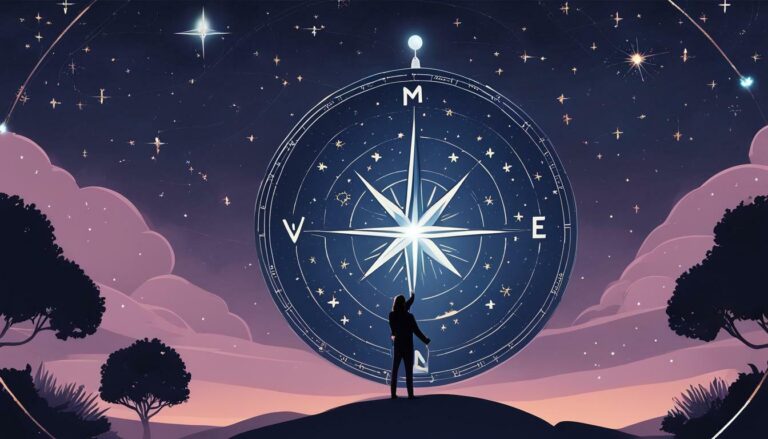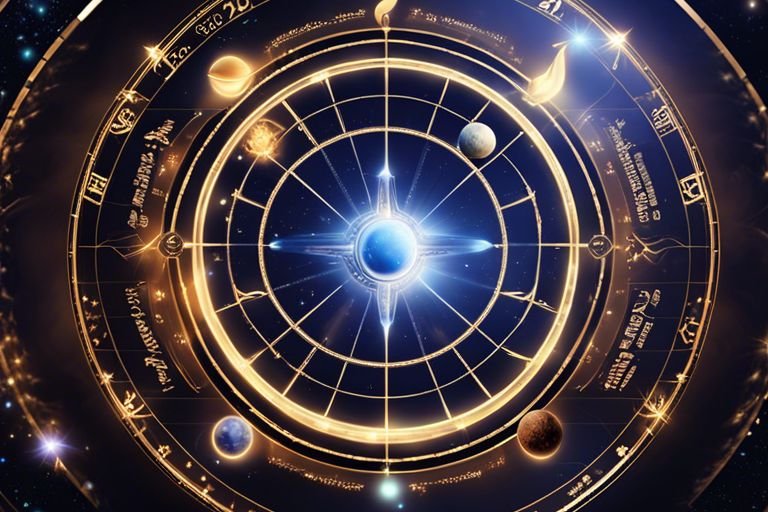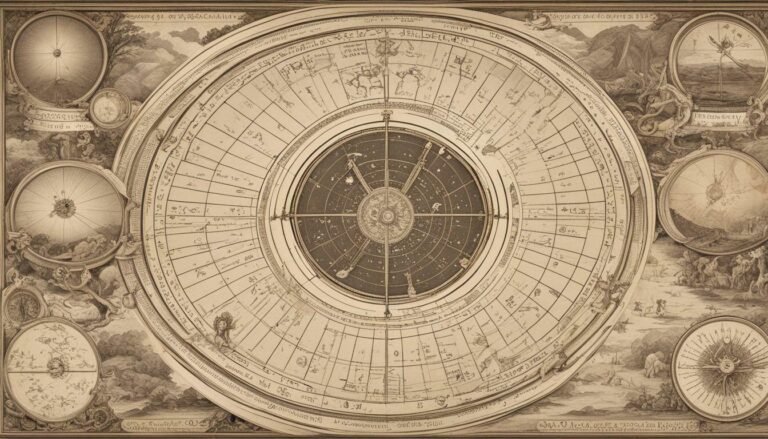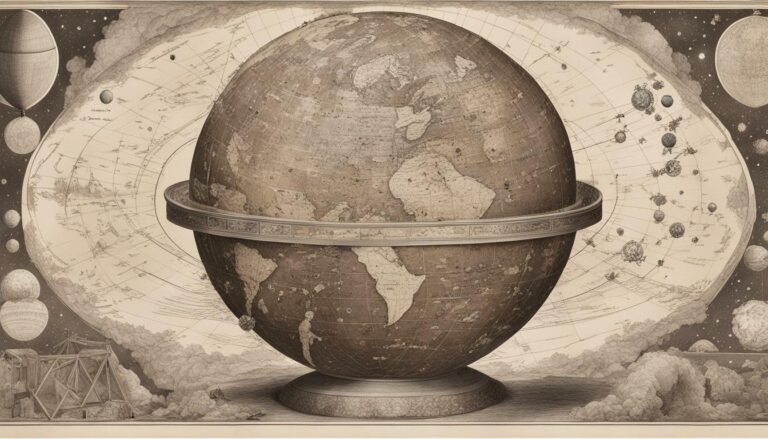Discover How to Make an Astrology Chart: Step-by-Step Guide
Are you curious about the secrets of the cosmos and want to know more about astrology? Making your own astrology chart is a great place to start. Whether you’re a beginner or have some knowledge about astrology, this guide will provide a comprehensive step-by-step tutorial on how to make an astrology chart.
In this section, we’ll provide an overview of what you can expect from the guide. We’ll explain the purpose of astrology charts and why they’re significant. Additionally, we’ll discuss the necessary information you’ll need to gather before creating your astrology chart and guide you through the process of calculating and plotting your chart. Finally, we’ll explore advanced techniques and insights to help you deepen your understanding of astrology.
Key Takeaways:
- Learn how to create an astrology chart through a step-by-step guide.
- Understand the significance of astrology charts and their various elements.
- Gather essential information to create an accurate astrology chart.
- Calculate and plot your astrology chart accurately using an astrology chart calculator or manual calculations.
- Explore advanced techniques and insights to gain further knowledge of astrology.
Understanding Astrology Charts and Their Significance
If you’re interested in astrology, you may have heard of astrology charts, also known as birth charts or natal charts. An astrology chart is a map of the positions of celestial bodies at the moment of a person’s birth. These charts are essential tools in astrology, providing insight into a person’s personality, strengths, weaknesses, and potential for growth.
Creating an astrology chart requires a basic understanding of the celestial bodies in astrology and the significance of their positions at the time of a person’s birth. The first step in understanding astrology charts is to familiarize yourself with the different components of the chart.
The Components of an Astrology Chart
An astrology chart typically consists of the following components:
- The zodiac signs
- The celestial bodies, including the sun, moon, planets, and asteroids
- The astrological houses
- The aspects between celestial bodies and houses
The zodiac signs are 12 equal divisions of the sky, each named after a specific constellation. They represent the various personality traits and qualities that people born under that sign are believed to possess.
The celestial bodies in astrology refer to the sun, moon, planets, and asteroids. Each of these bodies has its own unique energy and influence, which is believed to affect a person’s personality and life path. Understanding planetary positions is crucial in interpreting a birth chart accurately.
Astrological houses represent different areas of a person’s life, such as family, career, and relationships. There are 12 houses in astrology, and each one signifies a corresponding aspect of a person’s life.
Aspects between celestial bodies and houses refer to the angles formed between them. These aspects provide insight into how different energies in a person’s birth chart interact with each other.
Using an Astrology Chart Calculator
Calculating a birth chart manually can be a time-consuming and complicated process. Fortunately, there are many astrology chart calculators available online that can do the work for you. These calculators take the data you input (a person’s birth date, time, and location) and calculate the positions of the celestial bodies at the time of that person’s birth.
Once you have calculated your astrology chart, the next step is to interpret it. In the next section, we’ll discuss how to interpret the different elements of your birth chart and understand their significance in astrology.
Gathering Essential Information for Your Astrology Chart
Before you can create an astrology chart, you need to gather some essential information about the person for whom the chart is being made. By providing accurate details, you can ensure that the chart is as precise and informative as possible.
The most important information you’ll need is the person’s birth date, time, and place of birth. The date and time of birth determine the positions of the celestial bodies at the moment of birth, while the location of birth helps to establish the orientation of the chart. Be sure to obtain this information as accurately as possible, as even small discrepancies can significantly alter the chart’s interpretation.
Once you have this information, you can start creating your astrology chart. The process varies depending on the tools you’re using, but the central elements are the same.
If you’re using an astrology chart calculator, you’ll simply input the necessary details, and the calculator will generate the chart for you. However, if you prefer to calculate the chart manually, you’ll need to follow a series of steps to plot the positions of the celestial bodies accurately.
Regardless of the method you choose, it’s essential to maintain accuracy throughout the process. Remember, the more precise the chart, the more reliable its interpretation will be.
Calculating and Plotting Your Astrology Chart
Once you have gathered all the necessary information about the person for whom the chart is being made, it’s time to calculate and plot the chart. There are two ways to do this: using an astrology chart calculator or manually calculating the positions of celestial bodies. Here’s a detailed step-by-step guide for both methods:
Using an Astrology Chart Calculator
An astrology chart calculator is a convenient tool that calculates and plots an astrology chart for you. Follow these steps:
- Find a reliable astrology chart calculator online.
- Enter the person’s date, time, and place of birth in the required fields.
- Click the “calculate” button to generate the chart.
- Save a copy of the chart for future reference.
Manually Calculating and Plotting the Chart
If you prefer to do things manually, follow these steps:
- Find an astrological ephemeris that corresponds to the person’s birth year. An ephemeris is a table that shows the positions of celestial bodies at different times.
- Using the ephemeris, note down the positions of the sun, moon, and planets at the exact time and location of birth.
- Calculate the positions of the astrological houses. There are various methods for doing this; some use astrological software or charts, while others use mathematical formulas.
- Draw a chart using the positions of the celestial bodies and houses. You can use paper and pen or an online software program for this.
Regardless of which method you choose, it’s essential to ensure that the chart is accurate. Any small error can affect the chart’s interpretation, so double-check your calculations and data entry to avoid mistakes.
Interpreting Your Astrology Chart and Zodiac Sign Compatibility
Interpreting your astrology chart is an essential step in understanding the significance of your birth chart. Your chart contains information about the positions of celestial bodies and how they relate to and influence one another. Here’s a brief guide on interpreting some of the crucial elements of your birth chart.
The Zodiac Signs
The 12 zodiac signs are an integral part of astrology, and each sign carries its unique characteristics and personality traits. The position of the Sun in your chart determines your zodiac sign. Understanding the qualities associated with your zodiac sign can provide valuable insights into your strengths, weaknesses, and life path.
Planetary Positions
Each planet’s position in your birth chart represents a different aspect of your personality and life. For example, the position of Venus represents your love life and relationships, while the position of Mars represents your drive and ambition. Understanding the significance of each planet’s position in your chart can provide insights into how you may approach different situations in life.
Astrological Houses
Astrological houses correspond to different areas of your life, such as relationships, career, and home life. The position of the planets in the houses can provide insights into specific areas of your life and the energies that influence them.
Zodiac Sign Compatibility
Zodiac sign compatibility is an essential aspect of astrology, as it can provide insights into your relationships with others. Each zodiac sign has a unique compatibility with other signs, and understanding this can help you navigate your personal and professional relationships. Your birth chart can provide insights into your compatibility with others based on the positions of celestial bodies at your time of birth.
Interpreting your birth chart and zodiac sign compatibility can be challenging, but it can provide valuable insights into your personality, life path, and relationships. Consider consulting with an experienced astrologer to gain even greater insights into your birth chart.
Exploring Advanced Techniques and Insights
Now that you have created your astrology chart and gained a basic understanding of birth chart interpretation, it’s time to explore some advanced techniques and insights. By delving deeper into astrology, you can gain a more profound understanding of your chart and unlock even more insights into yourself and others.
Aspects
One advanced technique to consider when interpreting your birth chart is the study of aspects. Aspects refer to the angles between celestial bodies in your chart and indicate the nature of their relationship. Understanding aspects can reveal more about your personality, strengths, and challenges.
Each aspect has its unique meaning and influences how the planets interact with each other. For example, a conjunction occurs when two planets are in the same position, indicating a fusion of energy. In contrast, a square aspect represents tension and conflict between planets.
Transits and Progressions
Another advanced technique in astrology is the study of transits and progressions. Transits refer to the movement of celestial bodies and their impact on your birth chart. Progressions refer to the gradual evolution of your chart as you age.
By analyzing transits and progressions, you can gain insight into how you’re evolving and the challenges and opportunities that lie ahead.
Deepening Your Understanding of Birth Chart Interpretation
To deepen your understanding of birth chart interpretation, consider exploring different astrological systems and techniques. For example, you may want to learn about different house systems, such as Placidus or Whole Sign, or explore the use of asteroids and other celestial bodies.
Additionally, you can gain insight by exploring the connections between different elements of your chart. For example, how do your planetary positions relate to your astrological houses, and how do these connections shape your personality?
Expanding Your Knowledge of Astrology
If you’re interested in expanding your knowledge of astrology, consider exploring different branches of the practice, such as Vedic astrology or horary astrology. Additionally, reading books and articles by experienced astrologers can provide valuable insights and perspectives.
Ultimately, astrology is a vast and complex field that offers endless opportunities for exploration and growth. By continuing to learn and explore, you can gain even deeper insights into yourself and the world around you.
Conclusion
Congratulations, you’ve taken the first step towards unlocking the mysteries of the cosmos by creating your own astrology chart! We hope that our comprehensive step-by-step guide has been helpful in demystifying the process of astrology chart creation and interpretation.
Remember that understanding astrology charts and their significance is essential to interpreting birth charts accurately. By gathering essential information and plotting your chart, you can gain insights into yourself and others that were previously hidden.
Embark on Your Astrological Journey
Now that you have your completed astrology chart, it’s time to explore its meanings and delve deeper into the world of astrology. By interpreting zodiac signs, planetary positions, and astrological houses, you can gain insights into your personality, compatibility with others, and the world around you.
Additionally, by exploring advanced techniques and insights, you can deepen your understanding of birth chart interpretation and expand your knowledge of astrology. Consider aspects, transits, and progressions to gain a more nuanced view of your astrological chart.
Creating an astrology chart is an excellent way to gain insights into yourself and the world around you. By using our step-by-step guide and understanding of astrology, you now have the tools to embark on your astrological journey. We wish you luck and encourage you to continue exploring the world of astrology.
FAQ
Q: How long does it take to make an astrology chart?
A: The time it takes to make an astrology chart can vary depending on your familiarity with the process and the tools you are using. Generally, it can take anywhere from 30 minutes to a few hours to complete an astrology chart.
Q: Can I make an astrology chart for someone else?
A: Yes, you can make an astrology chart for someone else. However, you will need accurate information about their date, time, and place of birth to ensure the chart is accurate.
Q: Do I need any special tools to make an astrology chart?
A: While there are astrology chart calculators available online that can make the process easier, you can also create a chart manually with pen and paper or using astrology software. The choice of tools depends on your preference and level of comfort.
Q: Can astrology charts predict the future?
A: Astrology charts are not meant to predict the future with absolute certainty. They provide insights into the energies and influences that may affect a person’s life. It is important to remember that astrology should be used as a tool for self-reflection and guidance, rather than a definitive predictor of events.
Q: How accurate are astrology charts?
A: The accuracy of an astrology chart depends on the accuracy of the input data (date, time, and place of birth) and the skill of the astrologer. While astrology can offer valuable insights, it is important to approach it with an open mind and understand that interpretations can vary.
Q: Can astrology help in understanding relationships?
A: Yes, astrology can provide insights into relationship dynamics through compatibility analysis. By comparing the birth charts of two individuals, astrologers can identify potential areas of harmony and challenge in a relationship. However, it is important to remember that relationships are complex and astrology should be used as a tool for understanding, not determining compatibility.
Q: Are there different types of astrology charts?
A: Yes, there are various types of astrology charts, including natal charts (birth charts), synastry charts (relationship compatibility charts), and transit charts (charts that show the movement of planets over time). Each type of chart serves a different purpose in astrology.
Q: Can I use astrology charts for career guidance?
A: Yes, astrology charts can offer insights into career aptitudes, strengths, and potential challenges. By analyzing the positions of celestial bodies and astrological houses related to career, astrologers can provide guidance and suggestions for career paths that align with a person’s astrological profile.
Q: Is astrology a scientifically proven practice?
A: Astrology is not considered a scientifically proven field of study. It operates on metaphysical principles and is based on the belief that there is a correlation between celestial movements and human experiences. While astrology has been practiced for thousands of years, its validity is a matter of personal belief.
Q: Can I learn astrology on my own?
A: Yes, it is possible to learn astrology on your own. There are numerous books, online resources, and courses available that can help you understand the basics and delve deeper into the subject. However, studying with an experienced astrologer can provide valuable guidance and insights as you explore the intricacies of astrology.






